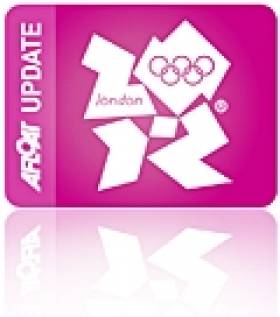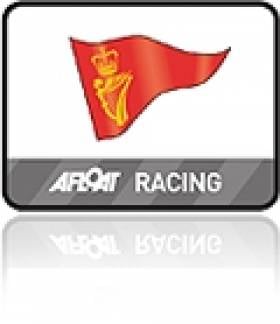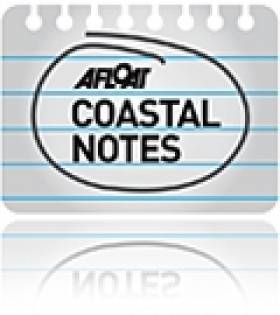Displaying items by tag: David O'Brien
#genuine prospects – Ireland has won Gold in the Star class and Bronze in the Radial class at the most important pre-Olympic event of the season.
While the boycott reduced Olympics of 1980 may have given hope to the Irish Olympic Sailing team, it is perhaps fair to say that the performances of the class of 2012 are closer to the positive end of the hope-expectation scale. With superb timing, in the last major confrontation of Olympic contenders, the Irish medal race sailors put in tremendous final race performances to take away a first, a third and a seventh from the Skandia Sail for Gold Regatta last week.
With only a few weeks to go to the ultimate competition in this quadrennial, Ireland is set to emulate and perhaps exceed the 1980 result. If we do, it could lessen the burden carried for so long by Wilkins and Wilkinson in the same way that Michael Carruth's gold in Barcelona eventually relieved the nation's unreasonable reliance on Ronnie Delaney.
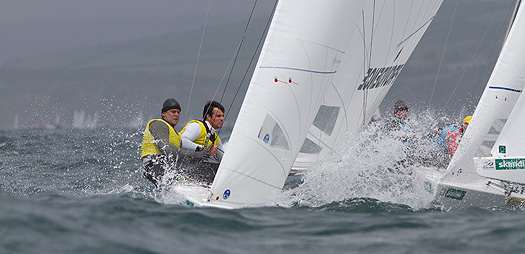
Peter O'Leary and David Burrows on the way to overall victory in the Star class. Photo: Brian Carlin
In the Star Class, Peter O'Leary and David Burrows have been mixing it with the world's best for a couple of years now and in getting the better of current World champions, Brazilians Robert Scheidt and Bruno Prada and the British Olympic Champions, Iain Percy and Andrew Simpson, the Cork/Dublin combo have laid down a very clear message that the destiny of this year's top reward is no longer the two horse race that many punters have been predicting. With consistency across a variety of conditions, the Irish Star team are no longer outsiders for a medal, but have clearly signalled their intention to, once again, ascend the Weymouth podium come August 5th. However, this Star Class is deep with talent and anyone of ten teams could realistically medal. Canada, Switzerland, Poland, France, Denmark and Greece all harbour aspirations to medal in the Star and our heroes will need to double check equipment on a daily basis to ensure they are not denied by equipment failure, particularly with the additional restrictions on coach support during the Games itself.
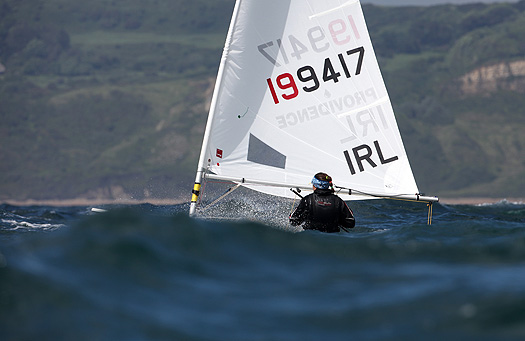
Annalise is recognised as the world leader in heavy airs. Photo: Richard Langdon
Annalise Murphy's welcome return to form, following a Radial worlds dogged by inconsistency and a poor showing (by her standards) at a reduced quality Delta Lloyd regatta, augurs well should Weymouth enjoy decent breeze. Recognised internationally as the class's best heavy weather sailor by some distance, it was encouraging to see that she wasn't completely off the pace in the lighter winds on the regatta's first day. Annalise has set out her schedule for the remaining period prior to the Games – more work on light air sailing work should be a part of the work plan.
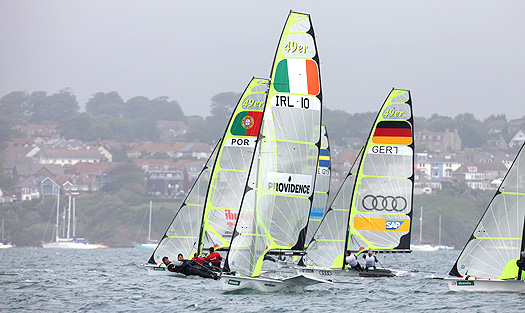
Ryan Searton and Matt McGovern produced three race wins at Sail for Gold last week. Photo: Richard Langdon
Team officials must be delighted, not only with the Star and Radial performances, but also by the 49er team of Ryan Seaton and Matt McGovern. 10th in the 2011 World Championship in Perth must have seemed to be a distant memory with a poor start to 2012.
Less than stellar results in the early season World Cup events culminated in failing to make gold fleet at the 2012 Worlds in Croatia in May last month. However, the Northern Ireland duo bounced back in fine style to record their best result to date. Barely hanging on to the medal race spot in the final gold fleet race, the boys then finished 5th in the medal race, leap frogging three competitors to finish in 7th overall. With three British sailors ahead of them, this conceivably puts them top five in the Olympic fleet. However, form suggests the gold medal battle will be between Spaniards, Iker Martinez and Xabier Fernandez, currently away on Volvo duty, and Australian World Champions Nathan Outteridge and Iain Jensen, with the battle for the minor medal between any number of countries - France, Britain, Finland and Denmark are among those – making the Irish team outsiders. But outsiders with a great boost to their confidence, and this young team, should they continue, will have made a huge claim for enhanced support for the next quadrennial.
So, Irish sailing embarks on the voyage to London 2012 with a reasonable expectation for a positive outcome. But for it to be similar to the Sail for Gold result will not only demand that all our sailors are on their best form, but also that there is consistently strong breeze for the duration. A tall order perhaps? Gaoth láidir, le do thoil!
Kerry Harbour Users Say No to Over-Regulation
#IRISH HARBOURS - Protesters took to the water off Kerry's piers last month in an organised swim drawing attention to proposed harbour bylaws designed to regulate the activities of water users.
“We need to make the public aware they have to make submissions,” Denise Collins told The Irish Times from Kells, which hosted one of the largest swims. “Traditional activities such as swimming will be over-regulated, we fear.”
The proposed bylaws would give Kerry County Council greater control over 16 of the county's 57 harbours and piers, including Kells, Kenmare, Portmagee, Brandon and Ventry.
Under the new bylaws, strict regulations would be placed on the use of loudhailers, landing and unloading passengers and freight, waste and even movement around the harbour.
"Draconian" charges are also set to be imposed on fishermen and other harbour users, while campaingers also feel that a ban on swimming and diving could also be added to the list.
The proposed bylaws already suffered a set-back earlier this year when Kerry County Councillors decided to restart the consultation process to allow the fishing industry, tourism operators and other interests more time to make submissions.
According to the Irish Examiner, only two submissions had been received by the council as of its January monthly meeting, despite senior council officials working for months on the draft proposals.
Cllr Toiréasa Ferris commented that the proposed charges in particular "would have huge implications for fishermen, some of whom might currently be earning only between €40 and €50 for a 14-hour day."
As previously reported on Afloat.ie, charges may also soon be hiked on yachts berthing at Ireland's main fishing harbours, a list that includes Dingle in Co Kerry.
Irish Marine Federation chairman David O'Brien expressed concern at the potential for such charges to damage "the good tourism dividend for coastal towns", noting that for every euro spent on a harbour berth, €10 was normally spent in the locality.
Simon Coveney Appointed Marine Minister
Cork sailor Simon Coveney (38) has been appointed as Minister of Agriculture, Food and Marine in the new cabinet of the Fine Gael/Labour Government formed yesterday.
The announcement has been welcomed by various marine interests pleased to see Marine back at the cabinet for the first time since the Department was dismantled by Fianna Fail's Bertie Ahern in 2002.

Marine Minister Simon Coveney TD
The appointment means Taoiseach Enda Kenny has kept good an election promise to reinstate the Marine department. A decade of lost opportunties has meant the sector has suffered through lack of infrastructure and coastline planning.

Simon Coveney at the helm of his yacht Wavetrain. Photo: Bob Bateman
"Simon is someone who understands the Sea as a sailor himself but also in his work as an MEP where he was involved in a number of major European maritime projects. This is a great opportuinty for the Marine. We look forward to working with him to develop this untapped resource." said David O'Brien of the Irish Marine Federation.
Simon was first elected to the Dáil in 1998 as one of Fine Gael's youngest TD's aged 26. He replaced his father Hugh Coveney TD following his untimely death.
Simon follows his father in to the post of Marine Minister. Hugh held the post in 1994.
Simon holds a B.Sc. in Agriculture and Land Management from Royal Agriculture College, Gloucestershire. He was also educated at Clongowes Wood College, County Kildare; University College Cork, and Gurteen Agricultural College, County Tipperary.
A keen fan of all competitive sport he has worked as a sailing instructor at his club Royal Cork Yacht Club in Crosshaven and been involved in many sailing regattas.
In 1997/8 he led the "Sail Chernobyl Project" which involved sailing a boat 30,000 miles around the world and raising €650,000 for charity.
In 2006 he contributed to RTE's series The Harbour and in a memorable quote, the Cork TD and former MEP said: "When somebody asks me the question, what's the one thing that's special about Cork?, I'd say the harbour."
Tiger Leads Class III in Royal Cork October League (PHOTOS HERE)
What a day this Sunday's racing turned out to be. From the moment one turned the corner on to the Crosshaven road at Carrigaline there was magic in the air writes Claire Bateman. The sun was shining, the trees were resplendent in their multi colour seasonal changes and the line of cars making their way to the Royal Cork Yacht Club was non-stop. The forecast said Sunday was going to be a very nice day with lots of sunshine but nowhere did I hear anyone say anything other than winds would be light and, so it seemed, until a flag outside one of the supermarkets on the road to Carrigaline seemed to be moving pretty nicely and was a taste of things to come.
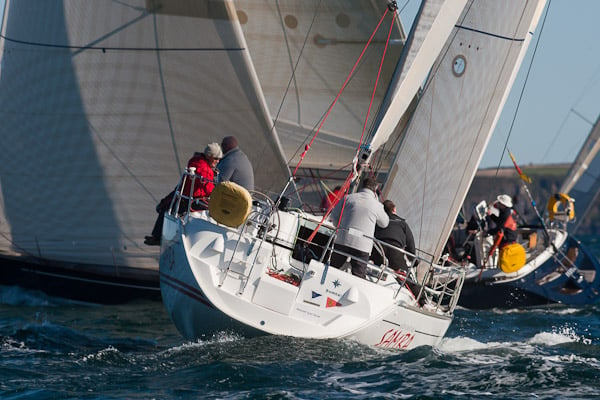
Tight racing in the penultimate race of Royal Cork's October League. Photo: Bob Bateman. Scroll down for more photos from yesterday
Classes Zero, One and 1720s got the nicest wind on the laid course to day. Race Officer Richard Leonard and his race committee in Capta Ventum, kindly provided by Pascal Healy, certainly made the best of the day. Today Richard decided on a change of format and started the 1720s first followed by Classes Zero and One together and then Class Two. He gave the fleets short courses providing very tight racing ensuring the crews had plenty of hard work and also providing very exciting viewing with a few heart-stopping moments. The 1720s, Zero and One did three rounds and Class Two did two rounds. With a northerly breeze of some 10 knots gusting to 12 and occasionally 14, it was to provide a tantalising taste of what was to come and there was no disappointment. Voices that hadn't needed to be raised at marks on previous Sundays found the necessity to make themselves heard today and the action was fascinating with hard work on the boats but a sense of great sailing exhilaration emanating from them.
Coming into race two of the day the skippers and crews had got the bit well between their teeth and were all like bucking broncos at the start line. In Class Zero there was an individual recall sounded. Jump Juice and Freya answered the call immediately and returned to restart and after some little while Gloves Off returned and while not knowing the reason why, one can only assume the helmsman perhaps was not quite convinced he had been over but then decided to return having considered it. Again the wind duly obliged and as in the first race, there were boats to the left, boats to the right and boats pretty well everywhere one looked. In Class Zero Tom Roche's Meridian from Kinsale had been performing extremely well but was slightly under
crewed today and was unlucky enough to have an incident at the weather mark in this race and after that things just did not go their way and they retired. This must have been disappointing as they had been doing so well. With Jump Juice winning the first race today and Gloves Off taking the second race and first overall to date in the series, the last day of racing next Saturday will be crucial as these races will be non discardable.
Race Officer Anthony O'Leary stood in to day for David O'Brien and the committee boat Sabrone was again kindly provided by Admiral Paddy McGlade. It was not such a lucky day wind wise inside the harbour for Classes Three and Four and White Sail 1 and 2. There was also extremely low water to day
and some of the skippers mentioned they had in fact touched rocks. Nonetheless they enjoyed good racing if at a somewhat lower pace than the competitors on the laid course.
At this point in time Class Three IRC looks like a two horse race with Tiger on 9pts followed by Bandit on 11pts. Class Four has a very similar situation with Sundancer on 9pts followed by Granny knot on 11pts. In White Sail 1 IRC Minx 111 had a good day to day with a first and second and currently has 7pts overall and the two big boats in the fleet Chancer from Kinsale and Aisha from RCYC are on 14pts each. In White Sail 2 IRC Plumbat is on 6pts overall with Phaeton on 9pts and Silk Breeze on 12pts.
And so we are coming to the final race of this exciting series. All competitors should note carefully that racing will take place on SATURDAY NEXT OCTOBER 30TH. The prize giving dinner will take place that evening at the Club House .
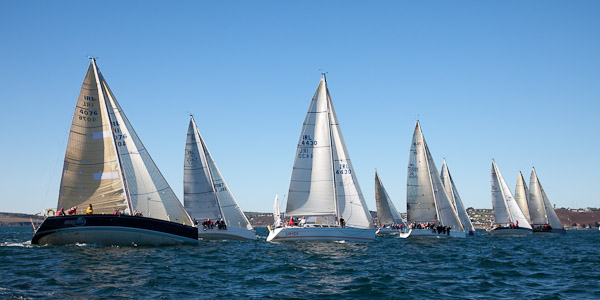
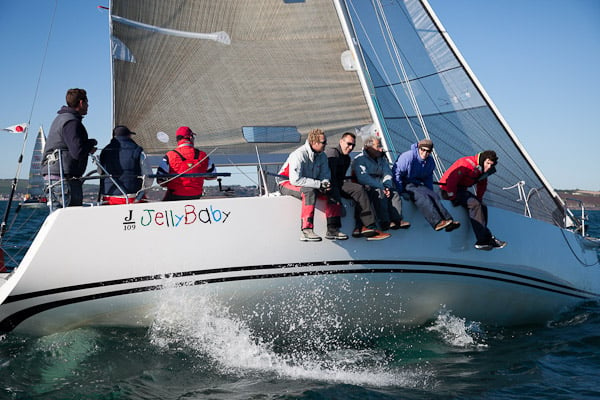
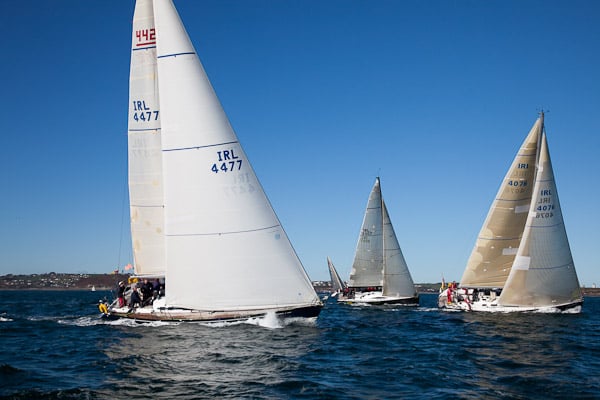
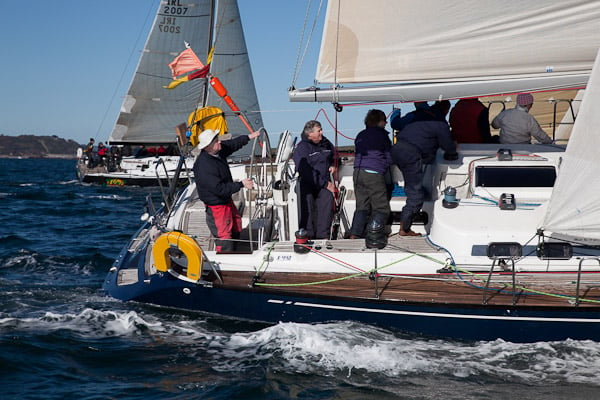
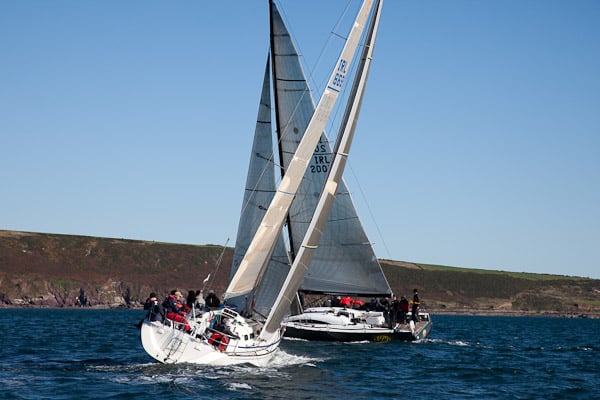
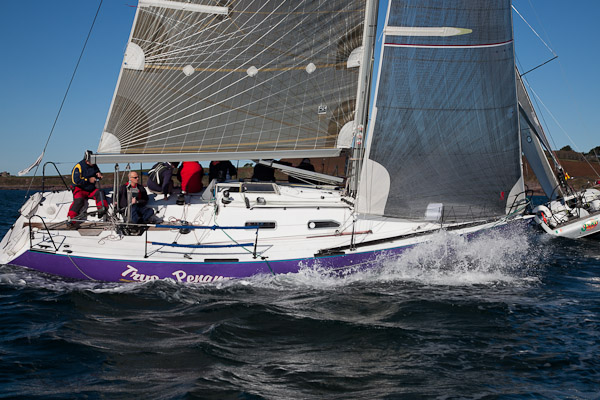
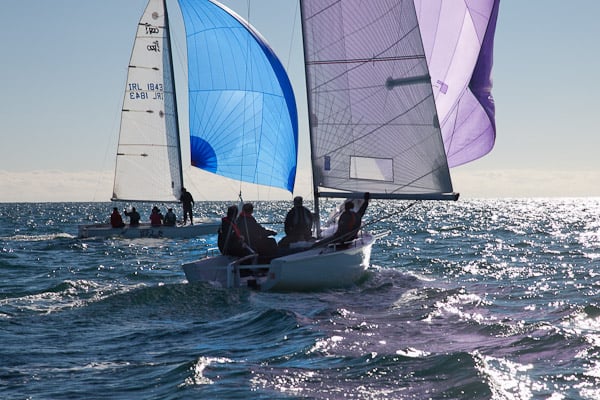
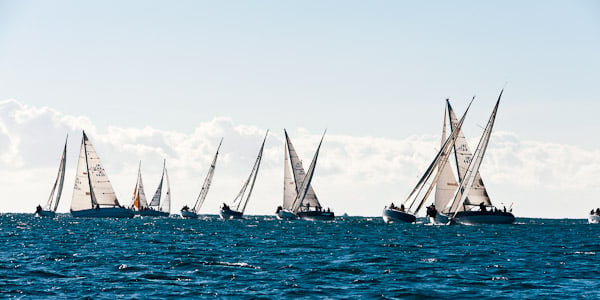
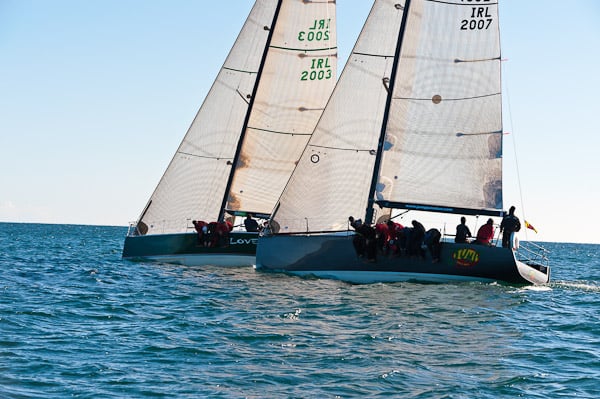
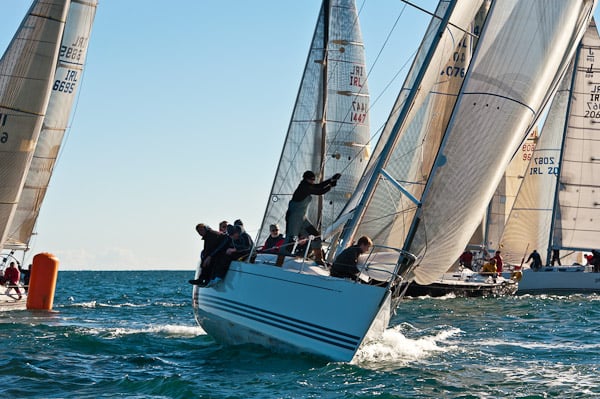
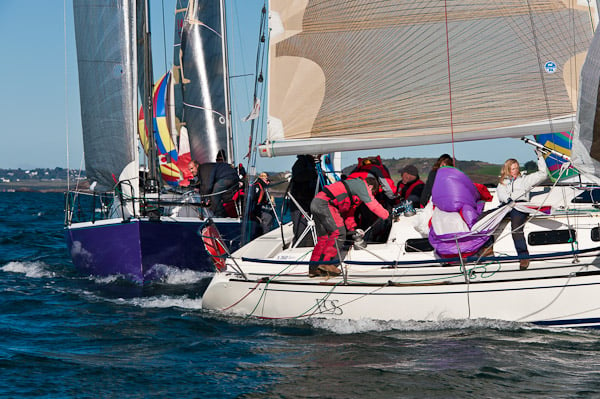
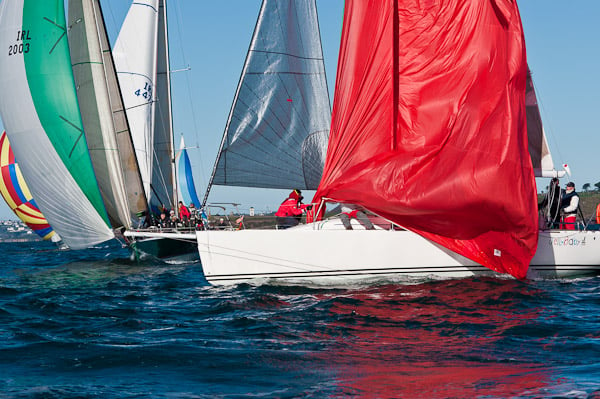
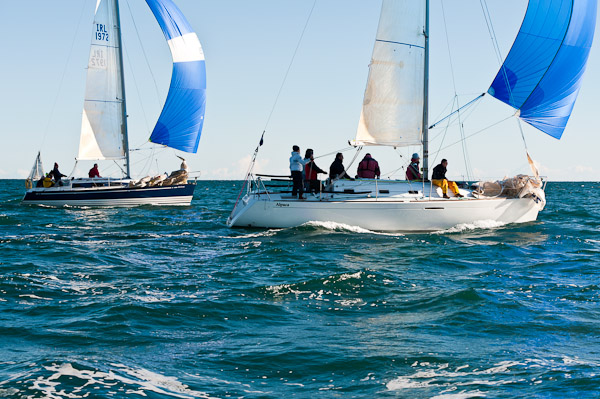
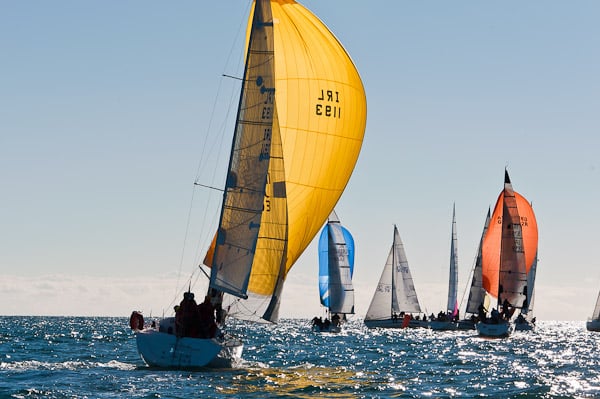
MORE OCTOBER LEAGUE GALLERY IMAGES HERE
Politicians Aim to Restart Courtown Marina Project with EU Cash
Wexford Councillors and County Council officials have come together to seek European assistance to help save the stalled Courtown marina, news of the move was published in the Gorey ECHO.
"This is precisely the kind of question our politicians we need to ask if we're ever to complete the necklace of marinas around our coastline, said the IMF's David O'Brien.
Plans for a 230-berth marina in Courtown were unveiled in November 2008 and included apartments and retail units. The plans also included the construction of a breakwater off the south pier in the village.
Childers visited the north Wexford seaside village to discuss the possibility of restarting the project which has been stalled since 2008 due to the economic recession.
Following her meeting with council officials and county councillors, Ms. Childers submitted a Parliamentary Question regarding the possibilities for getting financial assistance for marina facilities in Ireland.
In the question Childers says: "Is there funding opportunities or other supports available from the European Union in order to assist in providing finance for the development of marina facilities in Ireland to enhance our tourism product?"
Ireland, as an island nation, is working to develop its infrastructure as a destination for sailing holidays.
"The development of marinas in a sustainable fashion at key locations around the coast of Ireland to accommodate sailing and boating activities would benefit from investment from a tourism and economic development point of view." said Childers.
For every euro spent berthing in Courtown marina visiting sailors will spend 10 in the village, according to our research, says O'Brien. Huge Tourism benefits can literally come in on the tide, if only we had the infrastructure", he added.
The IMF is the national body that represents the marine leisure industry including the Irish Marina Operators Association (IMOA).
The County Council carried out a feasibility study which found that the marina had to be self-funding through sale of apartments and other units as there was no government funding for such developments.
Speaking this week, Director of Services with Wexford County Council, Niall McGuigan said: "It is currently not financially feasible but we hope for the best. We would be very eager for it to go ahead."
Mr. McGuigan said that the project was on hold until either funding became available, an investor was found or a combination of both.


























